Modern automobiles come with sophisticated computer systems that keep track of a number of performance metrics. These systems frequently generate error codes when something goes wrong, which aid mechanics in quickly diagnosing and resolving problems. P1153 is one such code that auto owners may find concerning. In this post, we’ll examine the meaning of the P1153 code, consider potential causes, and offer workable strategies to fix the problem. So, if you’ve ever noticed this code on your car’s dashboard, keep reading to learn more about what’s going on inside.
Table of Contents
Understanding The P1153 Code
Your car’s P1153 code acts as a warning signal from its brain. It implies that a component called the oxygen sensor may have a problem. This sensor monitors the air in your car’s exhaust, which aids in the engine’s proper operation. The oxygen sensor may not be functioning properly when the P1153 error code shows, according to this message. This can occur because the sensor is outdated or damaged. However, there may be problems with the connections that connect to it. Even minor issues like exhaust pipe leaks or engine air leaks can cause the sensor to malfunction.
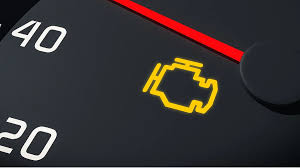
The P1153 error code tells you, that your car’s computer believes there is an issue with how it is breathing. The oxygen sensor may need to be changed, the cables examined and repaired, or any leaks may need to be sealed. It’s like your automobile is trying to tell you to give it a checkup.
Common Causes Of The P1153 Code
Understanding the fundamental causes of the P1153 code is crucial for efficient troubleshooting as there are numerous potential triggers. The following are some typical causes for this code to appear:
1. Oxygen Sensor Malfunction:
An oxygen sensor that isn’t working properly is the P1153 code’s most frequent cause. These sensors may become polluted or degrade over time, giving false results.
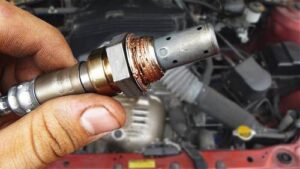
2. Wiring Problems:
The oxygen sensor’s wire may be damaged or rusted, which might obstruct the signal and cause the ECU to indicate an error.

3. Leaking Exhaust:
Any exhaust system leaks could increase the amount of oxygen in the exhaust stream, which would result in inaccurate sensor readings.

4. Leaky Vacuum:
Engine vacuum leaks may alter the air-fuel ratio and result in the P1153 error code.
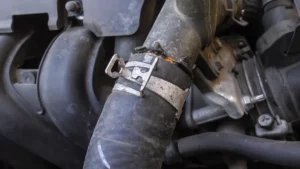
Solutions To Fix The P1153 Code
Now that we know some of the potential reasons for the P1153 error, let’s look at some possible fixes to remove it and restore your automobile to proper operation:
1. Oxygen Sensor Replacement:
Replace the oxygen sensor if it turns out that it is the problem. Locate the sensor using the service manual for your car, then replace it according to the manufacturer’s instructions. Often, it’s a simple DIY project.
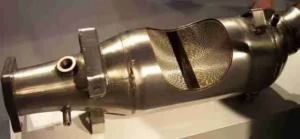
2. Examine And Fix The Wiring:
Examine the wiring that is attached to the oxygen sensor. If you discover any deterioration or damage, replace or repair the cables that were impacted.
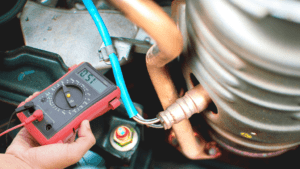
3. Eliminate Exhaust Leaks:
Check your exhaust system for leaks, and get them fixed right away. A skilled mechanic can frequently complete this.

4. Vacuum Leak Repair:
Vacuum leak detection and repair might occasionally be more difficult. To find and fix these problems, you might need the skills of a qualified mechanic.
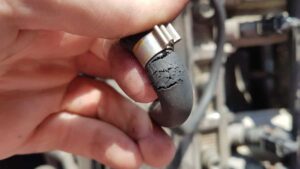
5. Remove Error Codes:
You can use an OBD-II scanner to erase the P1153 code after performing the required repairs. This will restart the ECU and enable a system evaluation. The code shouldn’t resurface if the problem was successfully fixed.

Repairing Cost To Fix The P1153 Code
A P1153 code in an automobile can be repaired for a variety of prices. If the only issue is a malfunctioning oxygen sensor, parts and labour might run you anywhere from $100 to $300. However, if there are additional problems like frayed wiring or exhaust leaks, the cost might increase and perhaps top $500.
Since simply resetting the code won’t address the fundamental problem, it is crucial to diagnose the precise issue first. It is advisable to consult a mechanic for a proper diagnosis, and they can give you an accurate quote based on the make and model of your car.
Frequently Asked Questions
Till now, we’ve covered the meaning, causes and solutions of the P1153 code in detail. Now, let’s see some FAQs to gain more knowledge about the topic.

1, Can I Resolve The P1153 Code On My Own?
Ans. You can try to replace the oxygen sensor if you have experience with auto repairs. A mechanic can assist if not.
2. Will The P1153 Error Message Go Away By Itself?
Ans. Not at all. For the code to vanish, the issue that is causing it must be resolved.
3. Driving With The P1153 Code Is It Safe?
Ans. Generally speaking, it’s safe for a short period of time, but it’s preferable to get it corrected right away to prevent wasting fuel or damaging your engine.
Conclusion:
Despite initially appearing scary, the P1153 code refers to a typical problem with modern vehicles’ oxygen sensors. You can correctly identify and resolve this issue by comprehending its significance and dealing with the underlying reasons. Whether it involves a straightforward sensor replacement or a more involved wiring repair, acting quickly helps keep your car operating smoothly and effectively. Remember, it’s always preferable to seek professional advice from an experienced mechanic if you’re unsure about any step of this procedure. You can erase the P1153 error code and resume trouble-free driving with the proper method.


![Read more about the article How To Fix Inside Car Lights Not Turning Off [4 Ways]](https://hydraulicsuspension.com/wp-content/uploads/2022/04/maxresdefault-5-300x169.jpg)
